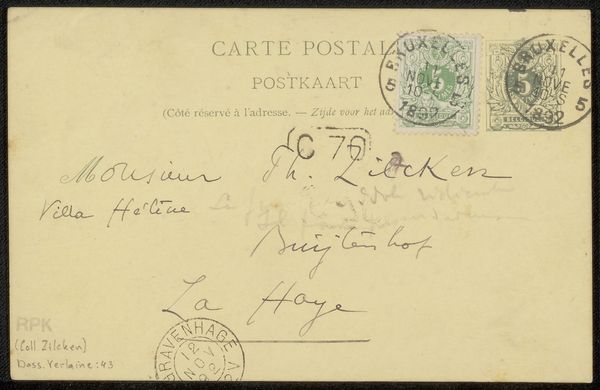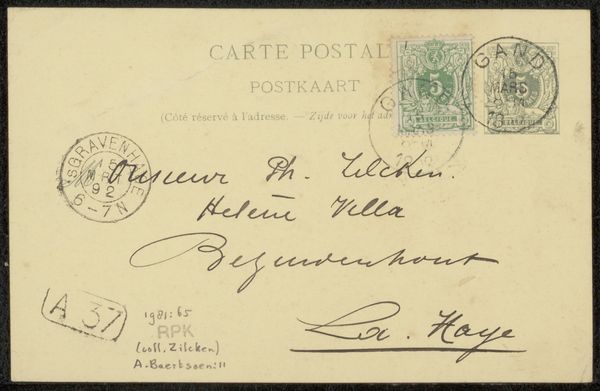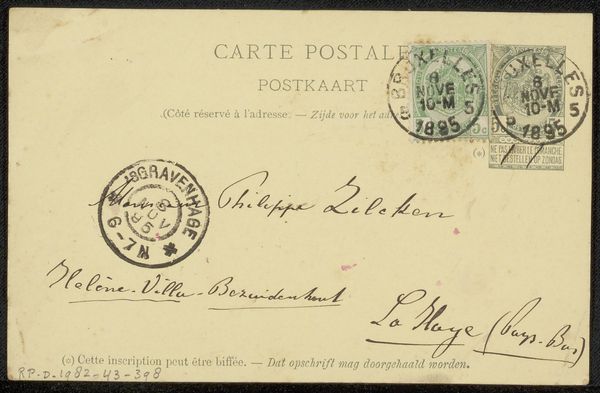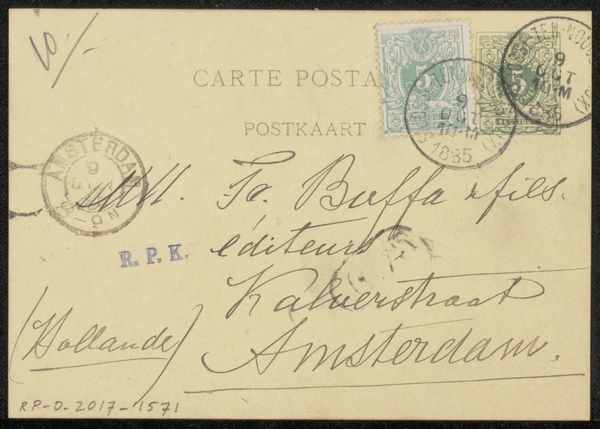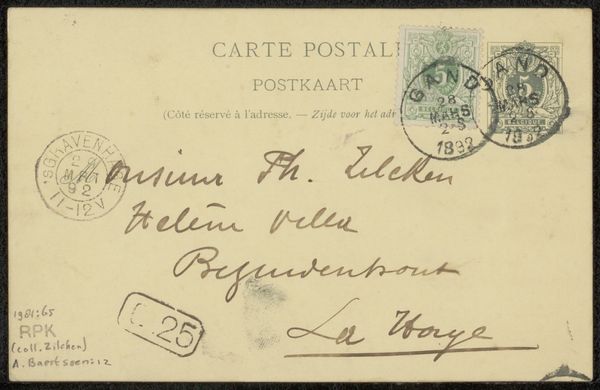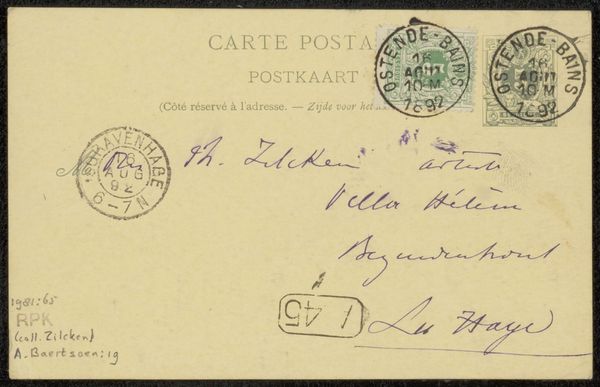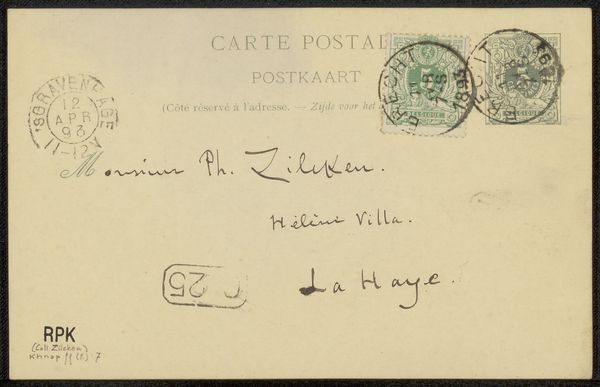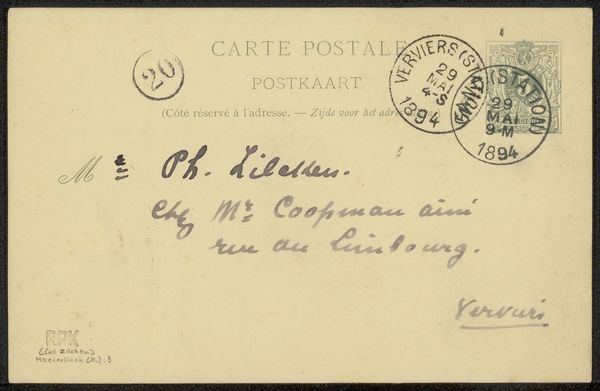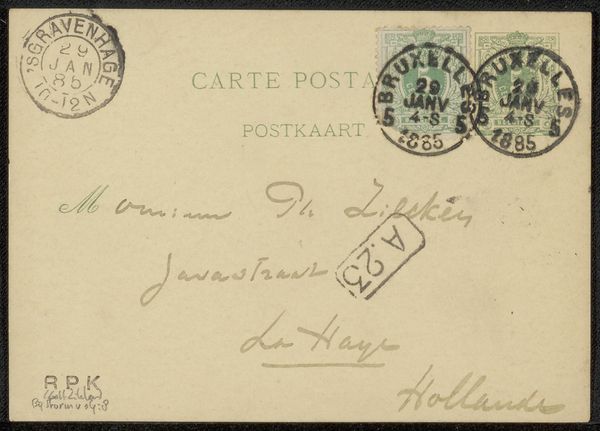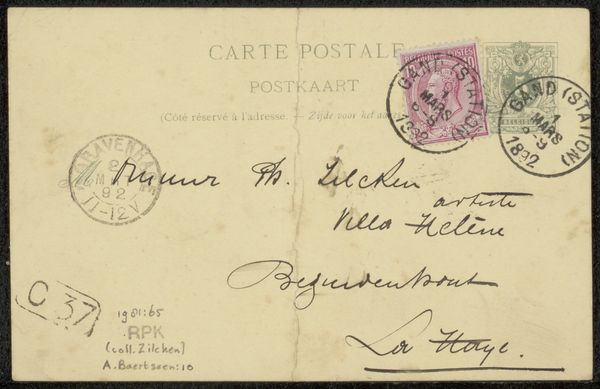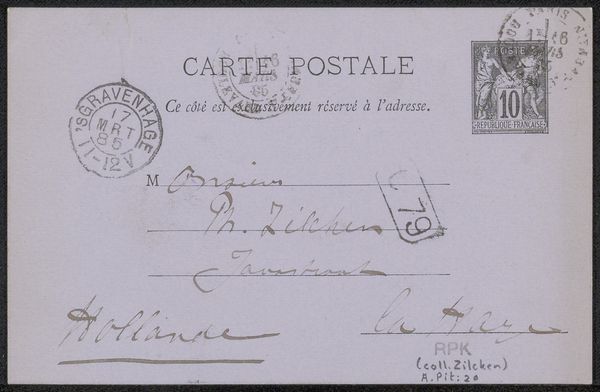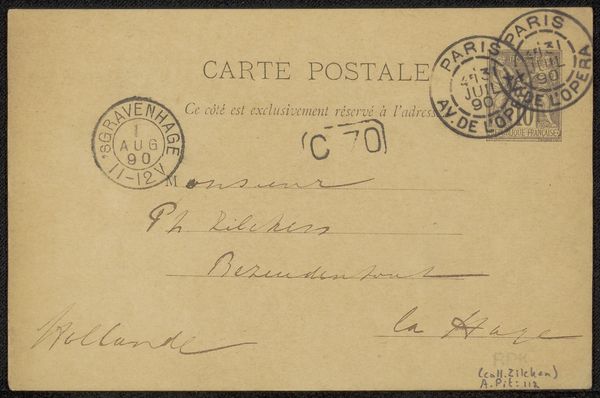
drawing, ink, pen
#
portrait
#
drawing
#
script typography
#
hand-lettering
#
old engraving style
#
hand drawn type
#
hand lettering
#
personal sketchbook
#
ink
#
hand-drawn typeface
#
pen-ink sketch
#
pen work
#
sketchbook drawing
#
pen
#
post-impressionism
Copyright: Rijks Museum: Open Domain
Editor: Here we have Albert Baertsoen's "Briefkaart aan Philip Zilcken," created before 1894. It's a pen and ink drawing, essentially a postcard addressed to someone. The script is so elegant, almost like a work of art itself. What strikes you when you look at this? Curator: For me, this postcard acts as a powerful testament to connection, communication, and the socio-political context of its time. The very act of sending a brief note, penned with such deliberate care, highlights the value placed on personal interaction before the advent of instant digital communication. Consider the materiality: ink on paper, a tangible object traveling through postal systems – infrastructures often shaped by imperial and colonial powers, influencing trade routes and the very accessibility of communication for different populations. Editor: So you're saying that even something as simple as a postcard has political implications? Curator: Precisely. Think about who had the privilege to send and receive mail during that era. Access to literacy, disposable income for postage, and even a fixed address were often markers of social status. The "briefkaart" wasn't accessible to all. Furthermore, the handwriting itself reveals subtle cues about the author’s background and education, aspects often intertwined with social and cultural hierarchies. The language used is also very telling of potential cultural dominance or resistance, in this case Dutch/French. Editor: That's a perspective I hadn't considered. I was so focused on the visual aspect. Curator: It's about broadening our lens. By analyzing these everyday artifacts within their historical and social frameworks, we gain insights into the power dynamics that shaped not only the art world but society as a whole. This piece prompts us to think about the evolution of communication, the role of technology, and enduring questions of access and equity. What might a digital postcard of today say to future historians about *our* power structures? Editor: I see how the context enriches the viewing experience, almost beyond just looking at the object itself. Thank you.
Comments
No comments
Be the first to comment and join the conversation on the ultimate creative platform.
